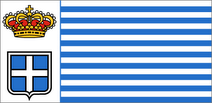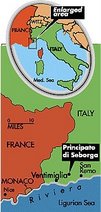
He has worked with Gualtiero Marchesi in Milan, Alain Ducasse in Monte Carlo, at Le Gavroche in London and with the maestro of pastry making Pierre Hermé of Fauchon in Paris.
The three stars of the Michelin guide were his identity card when the chef Davide Oldani chose to go back to his Lombardy region to open the D’O, a small restaurant, or rather a “trattoria” in Cornaredo.
The restaurant offers a traditional cuisine, using products of high quality but of local origin, allowing him to keep the prices down. It is a “democratic” deal that at the same time does not forget the lessons from the great masters. In this type of cuisine you cannot avoid olive oil, in particular that from Taggiasche olives* produced in Seborga by Vittorio Corsini.
“I prefer this type of oil for its delicacy and sweetness and for its flavour which does not overtake too much”, explain Orlandi. He has his own philosophy for using the olive oil in the kitchen that clearly has always to be extra virgin.
“Mine is a traditional cuisine where fat and fried mixtures are eliminated, therefore even if the extra virgin olive oil is part of the non saturated fat it has to be used very sparingly and preferably raw, otherwise it will take over the flavours of the dishes” - says Orlandi – “if the oil is good it can give the right aroma even if I use only a tea spoon”.
*Produced from the Taggiasche Olives, a quality that is typically Ligurian from the western Riviera, which are dark-green and small in size. Plants that give this type of olive are centuries old and were planted in ancient times by the monks and cultivated on terraces overlooking the sea.
The restaurant offers a traditional cuisine, using products of high quality but of local origin, allowing him to keep the prices down. It is a “democratic” deal that at the same time does not forget the lessons from the great masters. In this type of cuisine you cannot avoid olive oil, in particular that from Taggiasche olives* produced in Seborga by Vittorio Corsini.
“I prefer this type of oil for its delicacy and sweetness and for its flavour which does not overtake too much”, explain Orlandi. He has his own philosophy for using the olive oil in the kitchen that clearly has always to be extra virgin.
“Mine is a traditional cuisine where fat and fried mixtures are eliminated, therefore even if the extra virgin olive oil is part of the non saturated fat it has to be used very sparingly and preferably raw, otherwise it will take over the flavours of the dishes” - says Orlandi – “if the oil is good it can give the right aroma even if I use only a tea spoon”.
*Produced from the Taggiasche Olives, a quality that is typically Ligurian from the western Riviera, which are dark-green and small in size. Plants that give this type of olive are centuries old and were planted in ancient times by the monks and cultivated on terraces overlooking the sea.
(Extract from an article published by Vinitaly, a renown Wine & Spirits Trade Exhibition held every year in Verona, Italy).



